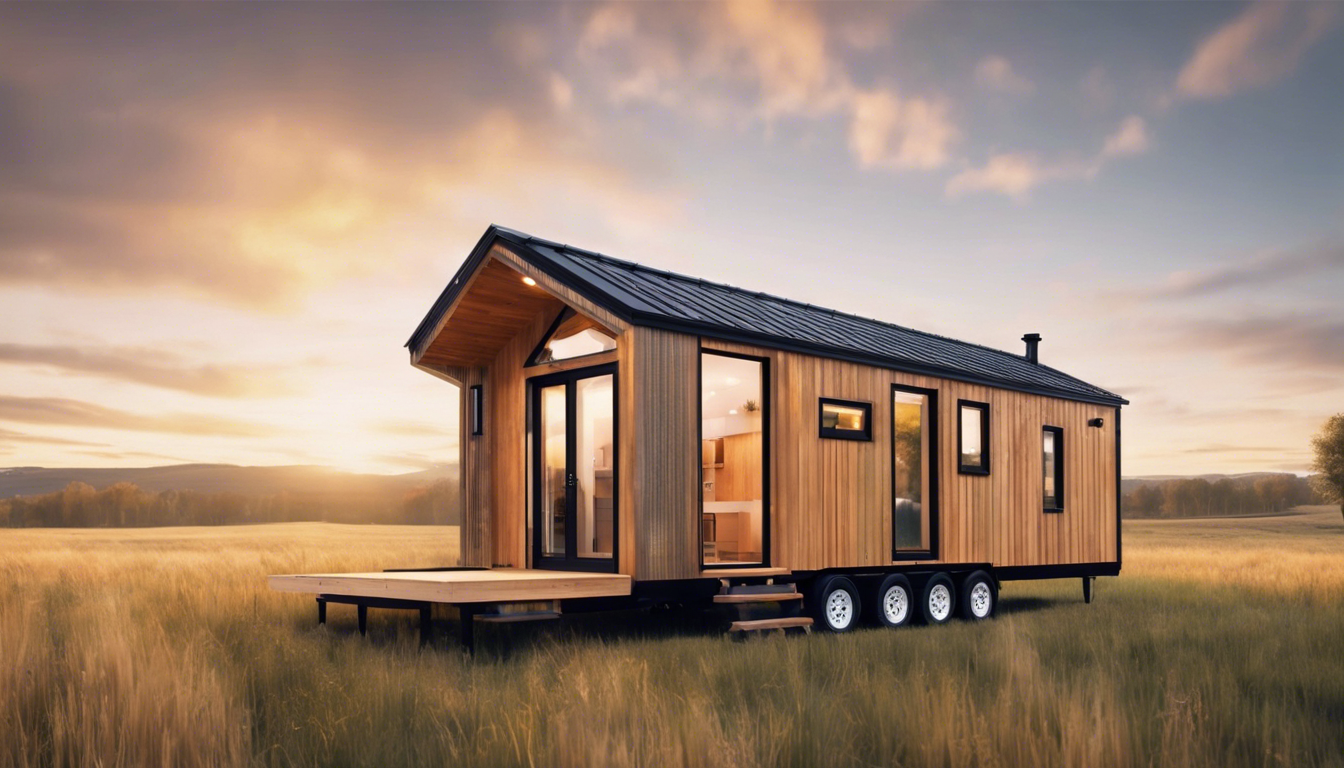Radiant floor heating offers an efficient and comfortable solution for tiny homes.
As more people embrace smaller living spaces, finding effective ways to keep them warm is essential.
Radiant floors for tiny homes provide an innovative heating option that maximizes comfort while minimizing energy costs.
This article explores how radiant floor heating works, its benefits, installation tips, and guidance on selecting the right system for your tiny home.
The Most Popular Modular/Tiny Home On Amazon
Key Takeaways
- Radiant floor heating offers efficient warmth and comfort in compact living spaces.
- Installing radiant floors can significantly improve thermal efficiency and reduce energy bills.
- The flexibility of radiant heating systems allows for customization to fit small home layouts.
- Proper installation is key; following best practices ensures optimal performance of radiant floors.
- Choosing the right radiant heating system depends on your specific needs and the layout of your tiny home.
Understanding Radiant Floor Heating
Radiant floors for tiny homes offer a practical heating solution that maximizes comfort while saving space.
This system utilizes heated tubes or electric mats installed beneath the floor surface.
When activated, they warm the floor, which then radiates heat upward into the room.
This method ensures even heat distribution, creating a cozy environment without relying on bulky heating units.
Tiny homes benefit from radiant floor heating by maintaining a consistent temperature and improving energy efficiency.
Homeowners often find that radiant floors reduce energy costs since they heat spaces more effectively than traditional heating methods.
With limited square footage, radiant floors become an ideal choice, promoting warmth without sacrificing living space.
Benefits of Radiant Floors for Tiny Homes
Radiant floors for tiny homes offer many advantages that enhance comfort and efficiency.
First, they provide even heat distribution, keeping every corner of a small space warm and cozy.
This system eliminates cold spots, making tiny homes feel larger and more inviting.
Second, radiant heating is energy-efficient, as it operates at lower temperatures than conventional heating methods.
This efficiency can lead to lower utility bills, which is crucial for tiny home living.
Additionally, radiant floors do not use bulky equipment, allowing for more usable space.
They also improve air quality by minimizing the circulation of dust and allergens commonly associated with traditional heating systems.
Overall, choosing radiant floors for tiny homes maximizes space and enhances the living experience.
‘Home is not a place, it’s a feeling.’ – Cecelia Ahern
The Most Popular Modular/Tiny Home On Amazon
Installation Tips for Radiant Floor Heating
Installing radiant floors for tiny homes is an effective way to ensure consistent warmth and comfort in limited spaces.
First, choose the right system for your needs: electric or hydronic systems work well for tiny homes.
Next, plan your layout carefully.
Since space is limited, avoid excessive bends and curves in the tubing or wiring to maximize heating efficiency.
Ensure proper insulation beneath the floor to prevent heat loss.
This can significantly enhance the system’s performance.
When placing the heating elements, maintain a uniform spacing to achieve even heat distribution.
Finally, consult with a professional to ensure adherence to building codes and to achieve optimal results.
By following these tips, you will successfully install radiant floors in your tiny home.
Choosing the Right System for Your Tiny Home
Selecting the best heating system for your tiny home is crucial, especially if you want comfort and efficiency.
Radiant floors for tiny homes provide a great solution.
This system heats floors from below, ensuring warmth rises evenly throughout the space.
It operates silently, which is ideal for small living areas where noise can be an issue.
Additionally, radiant floor heating is energy-efficient, helping you save on energy bills.
When choosing radiant floors, consider the type of flooring you will install.
Materials like tile or stone work well with this system due to their ability to retain heat.
Evaluate your tiny home’s layout and insulation as well, as these factors impact heat distribution.
Overall, radiant floors for tiny homes enhance comfort while maximizing space.
Frequently Asked Questions
What are radiant floors and how do they work?
Radiant floors are a type of heating system where heat is distributed from the floor upwards, providing a comfortable and even warmth throughout your living space.
They can use electric heat mats or hydronic systems with heated water running through pipes beneath the flooring.
What are the benefits of installing radiant floors in a tiny home?
Radiant floors offer numerous benefits for tiny homes, including energy efficiency, space-saving advantages, improved comfort due to even heat distribution, and the ability to free up wall space as there are no radiators or vents required.
Are radiant floors difficult to install in a tiny home?
While installing radiant floors can be a DIY project for some, it is often recommended to hire a professional, especially for hydronic systems.
Proper installation is crucial to ensure efficiency, safety, and compliance with building codes.
How do I choose the right radiant floor heating system for my tiny home?
Choosing the right radiant floor heating system depends on factors like your budget, the size of your space, existing flooring type, and whether you prefer electric or hydronic systems.
Consider consulting with a heating expert to assess your specific needs.
Can radiant floors work with any type of flooring?
Yes, radiant floors can work with various flooring types.
However, some materials conduct heat better than others.
Tile and stone are excellent choices, while carpet may require additional consideration to prevent insulation.




Leave a Reply